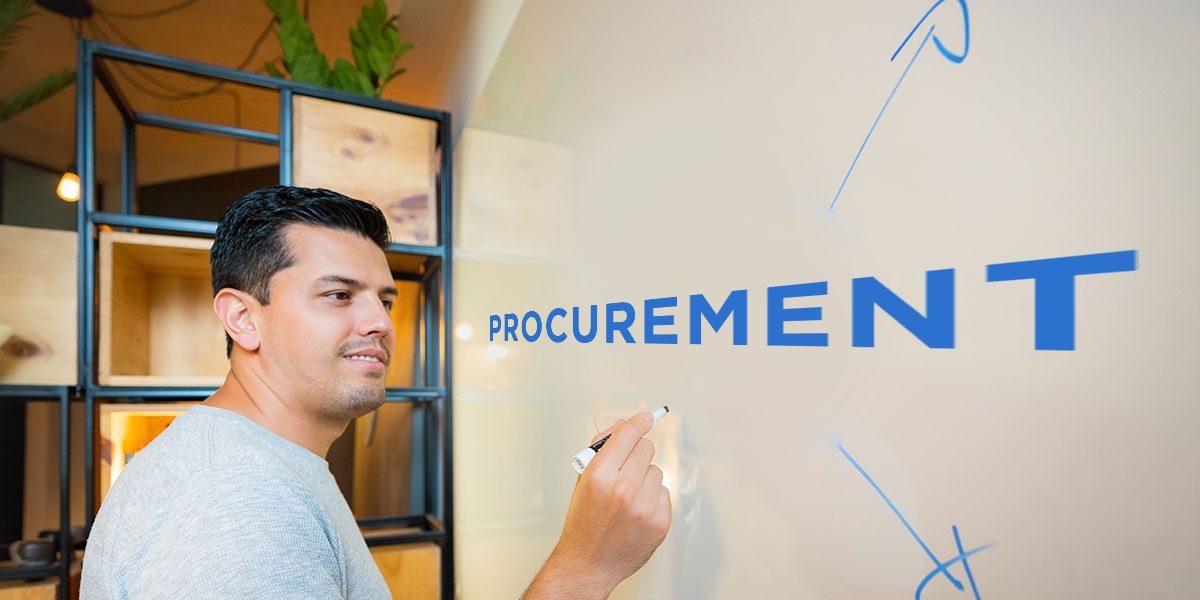The Easiest Guide to Efficient Business Procurement

Every business has an inevitable function called procurement. To have a swift operation, businesses must have enough resources whether it’s goods and services that they offer to their clients or customers, or the goods and services their business needs to function efficiently.
From the large equipment to the smallest item like a paper clip, these items are essential for a business to run well. To take the guesswork out of procurement, let’s talk about how it works.
What is Procurement?
For businesses, it is extremely important to have a good handling of the supplies used for the organization, this is where procurement comes in.
The term procurement refers to the process of managing the purchase of goods and services of a business. It is the main component of supply chain management that encompasses the acquisition process —initial identification of needs, through evaluation of vendors and alternatives, to contract formation and record keeping.
To put it simply, procurement is the process of acquiring goods, services, and labor to conduct the operations of a business. These goods or services can either be raw materials, manufacturing services, construction, office equipment, or any other resources that are essential in both the external and internal affairs of the companies.
The procurement process is often repeated for each new need or purchase. It is practiced by both public and private sectors and may be done by an internal department or by an outsourced third-party provider.
When it comes to managing spending, sourcing goods, and making deals, some companies may put them all in one category—a business’s expenditure, whatever it may be, is an expenditure. In reality, a business’s spending has a lot of differences that should always be accounted for.
There are two types of business procurement: direct and indirect. These two should both be a separate category and should be handled differently. So, what makes these two types of procurement different?
Want to Talk to us About Procurement?
Direct Procurement
Direct procurement is goods, materials, and services bought for external usage and used for production to service either a client or a customer. These purchased raw materials contribute to the goods that the company offers. Meaning, it is the ones being sold out in the market and the items needed to generate income.
Usually, a business collects a pool of suppliers and assesses the best possible costs for large quantity orders.
Because of the nature that it’s something that a business brings to a table to gain profit, they place a higher priority on their direct procurement management. But, what many companies don’t realize is that indirect procurement is vital to the business too.
Indirect Procurement
Indirect procurement, otherwise called administrative spending, is a necessity for businesses to function well. It is the purchase is of goods, materials, services for internal business use such as:
- Office equipment
- Travel expenses
- Training
- Software
- Marketing and advertising
In the increasing market, it’s important that companies cut costs in certain areas to allow for better growth profit in the future.
Since it doesn’t necessarily impact the income stream of the business, indirect procurement is where cutting costs mostly happens. However, that will entirely depend on the mission of each company as some believe that both direct and indirect procurement is equally important.

8 Essential Steps of Procurement Process
The goods obtained through the procurement are not just for servicing clients or customers but also to fill out the needs of each member of the organization. Procurement impacts the costs and savings of a company. So to produce higher profits, a company must manage its spending from the enterprise level. With the right procurement process that a business was able to set foot on from the beginning, it’s easier to see the entire picture of how they manage their supply chain. This also allows businesses to manage the risks from any financial, operational, or business contract issues.
1. Identification of Needs
First things first: figure out what your company’s needs are and identify the prioritization.
Are you looking for software, raw materials, or services? At which point in time do you need them?
Acquiring the right materials for your business requires more than just lots of research, it also requires knowing what you are looking for, how many you will need, and where you can find them.
2. Vendor Selection
There are different types of suppliers you can check out for your procurement needs: job shops that focus on small batches and quick turnaround times; mass suppliers which are geared toward large orders; and custom manufacturers which focus on high-quality products that often take longer to make.
For larger orders, it’s always best to order a sample first before moving forward with a bulk order. Once you’ve identified the goods and quantities that you need, list down options of vendors that can make it for you at an affordable rate without sacrificing the quality.
3. Purchase Requisition and Review
Once you know what your business needs and which vendor provides the best value for money, it’s time to prepare a purchase requisition (PR) form.
Typically, a company has a set of policies and procedures that must be followed for all requisitions. The policy usually includes the dollar value of the purchase, any competitive bidding requirements, and the number of other requisitions that must be approved before invoicing.
4. Invoice and Payments
The invoice should have a detailed breakdown of the items and their costs. It should also provide a deadline and finally be sent to the business or the assigned purchasing manager.
Upon receipt of the invoice, make sure to check everything inside the invoice as it’s going to be the last chance for you to make any changes to your requests.
Once both parties agree to the final pricing and quantities, then you’re ready to go on to the next step.
5. Payment
This may depend on your agreement with the vendor. Typically, once you receive the goods or services and the order has been completed is the right time to pay in full.
However, note that some vendors may ask for a down payment first or outright require you to pay in full before they deliver the products or services you ordered.
6. Record Keeping
Procurement is now a long-term function of any organization, hence, it needs proper planning and structure. You’ll also need a central database of all your orders and invoices across your direct and indirect procurement processes.
Procurement can be a long process characterized by several steps so make sure that you track all the relevant information related to procurement and have proper documentation in a paper trail or using digital forms.

Why Should You Improve Your Procurement Process?
It can be challenging to manage all of the needs as well as suppliers of your company. The procurement process becomes even more complex when you’re trying to maximize quality and control costs at the same time, not counting the part where there are many vendors you have to deal with as well.
To improve the procurement process, companies may outsource their procurement departments so they have one less thing to worry about. But, companies who want to be in control of the overall internal system can designate a dedicated procurement department with a purchasing manager—the one who has to manage the company’s internal procurement functions.
Think of procurement as a shopping experience, but in this case, it’s smarter and more complex. In business, streamlining the procurement process is a necessity to help identify potential roadblocks that may come in the future. So if you’re looking to outsource your procurement process or you’re looking for a procurement specialist, contact us and we’ll help get you started.
